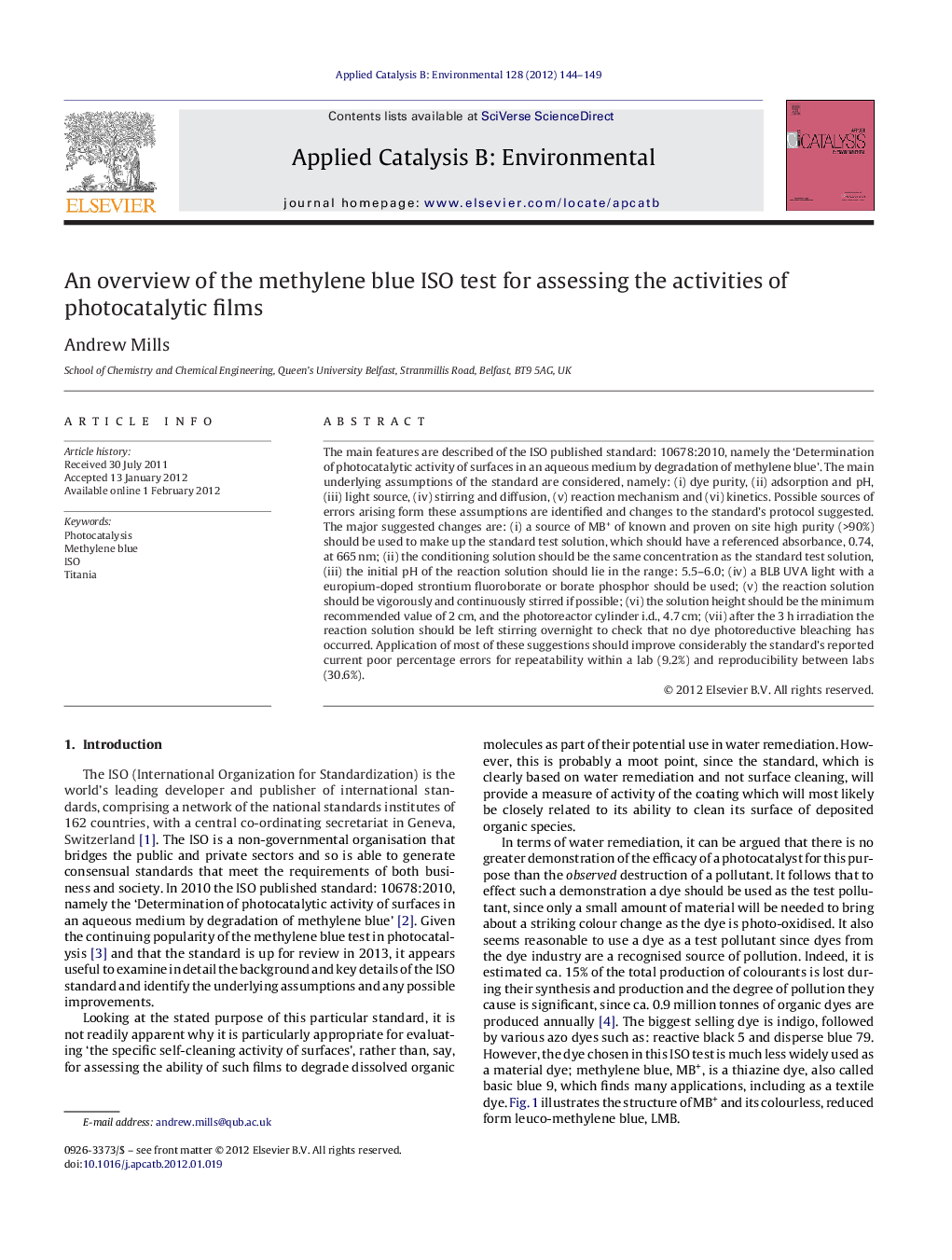| کد مقاله | کد نشریه | سال انتشار | مقاله انگلیسی | نسخه تمام متن |
|---|---|---|---|---|
| 46622 | 46443 | 2012 | 6 صفحه PDF | دانلود رایگان |

The main features are described of the ISO published standard: 10678:2010, namely the ‘Determination of photocatalytic activity of surfaces in an aqueous medium by degradation of methylene blue’. The main underlying assumptions of the standard are considered, namely: (i) dye purity, (ii) adsorption and pH, (iii) light source, (iv) stirring and diffusion, (v) reaction mechanism and (vi) kinetics. Possible sources of errors arising form these assumptions are identified and changes to the standard's protocol suggested. The major suggested changes are: (i) a source of MB+ of known and proven on site high purity (>90%) should be used to make up the standard test solution, which should have a referenced absorbance, 0.74, at 665 nm; (ii) the conditioning solution should be the same concentration as the standard test solution, (iii) the initial pH of the reaction solution should lie in the range: 5.5–6.0; (iv) a BLB UVA light with a europium-doped strontium fluoroborate or borate phosphor should be used; (v) the reaction solution should be vigorously and continuously stirred if possible; (vi) the solution height should be the minimum recommended value of 2 cm, and the photoreactor cylinder i.d., 4.7 cm; (vii) after the 3 h irradiation the reaction solution should be left stirring overnight to check that no dye photoreductive bleaching has occurred. Application of most of these suggestions should improve considerably the standard's reported current poor percentage errors for repeatability within a lab (9.2%) and reproducibility between labs (30.6%).
Figure optionsDownload as PowerPoint slideHighlight
► The main features of the ISO standard dealing with methylene blue and photocatalysis are described.
► Assumptions: dye purity, adsorption and pH, light source, diffusion, mechanism and kinetics.
► Errors arising from these assumptions are considered and improvements suggested.
► Implementation of improvements should improve the standard's repeatability and reproducibility.
Journal: Applied Catalysis B: Environmental - Volume 128, 30 November 2012, Pages 144–149